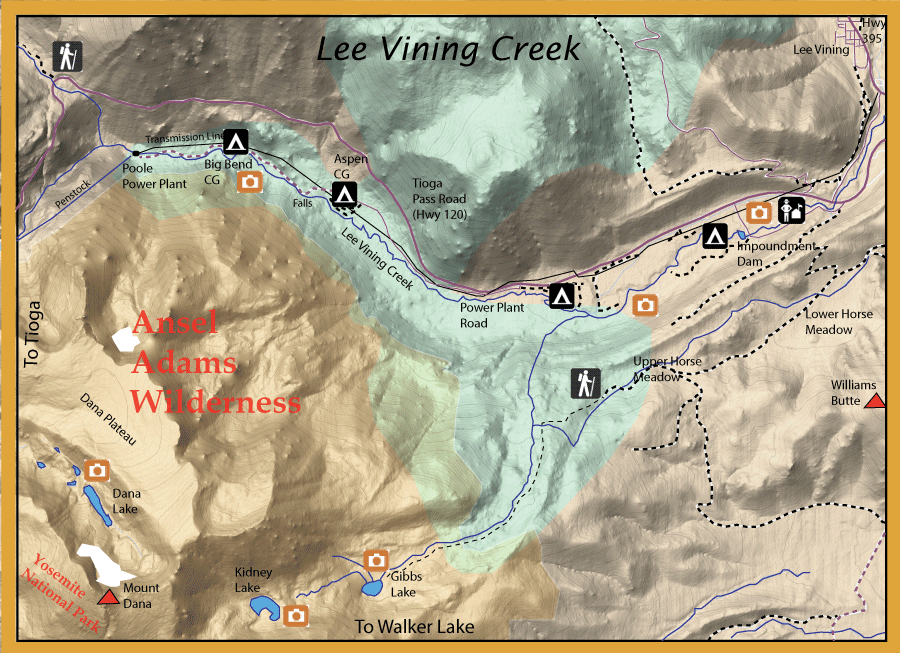


|
|||
Suggested Flies for Lee Vining Creek area: | |||
|
Other Local Favorites: Wet Flies: |
Dry Flies: |
Nymph Flies: |
|
|
Directions:  Take the Tioga Pass Road (Hwy 120) off Hwy 395 in Lee Vining. Power Plant Road forks off Tioga Pass Road about 5 miles from Hwy 395. | ||
|
| ||
|
Notes:
| ||
Fishing Regulations (Effective March 1st, 2021)Lee Vining Creek: From the last Saturday in April through November 15, 5 trout daily bag limit, 10 trout in possession; and, from November 16 through the Friday preceding the last Saturday in April, 0 trout bag limit, artificial lures with barbless hooks only and trout must be released unharmed and not removed from the water. Lee Vining Creek below the Impoundment Dam to Mono Lake: Saturday preceding Memorial Day through September 30th. No gear restrictions, 2 trout limit. 4 trout in possession and from Oct 1st through the Friday preceding Memorial Day, artificial lures with barbless hooks. 0 trout limit. All other creeks and tributaries: From the last Saturday in April through November 15, 5 trout daily bag limit, 10 trout in possession; and, from November 16 through the Friday preceding the last Saturday in April, 0 trout bag limit, artificial lures with barbless hooks only and trout must be released unharmed and not removed from the water.
| ||